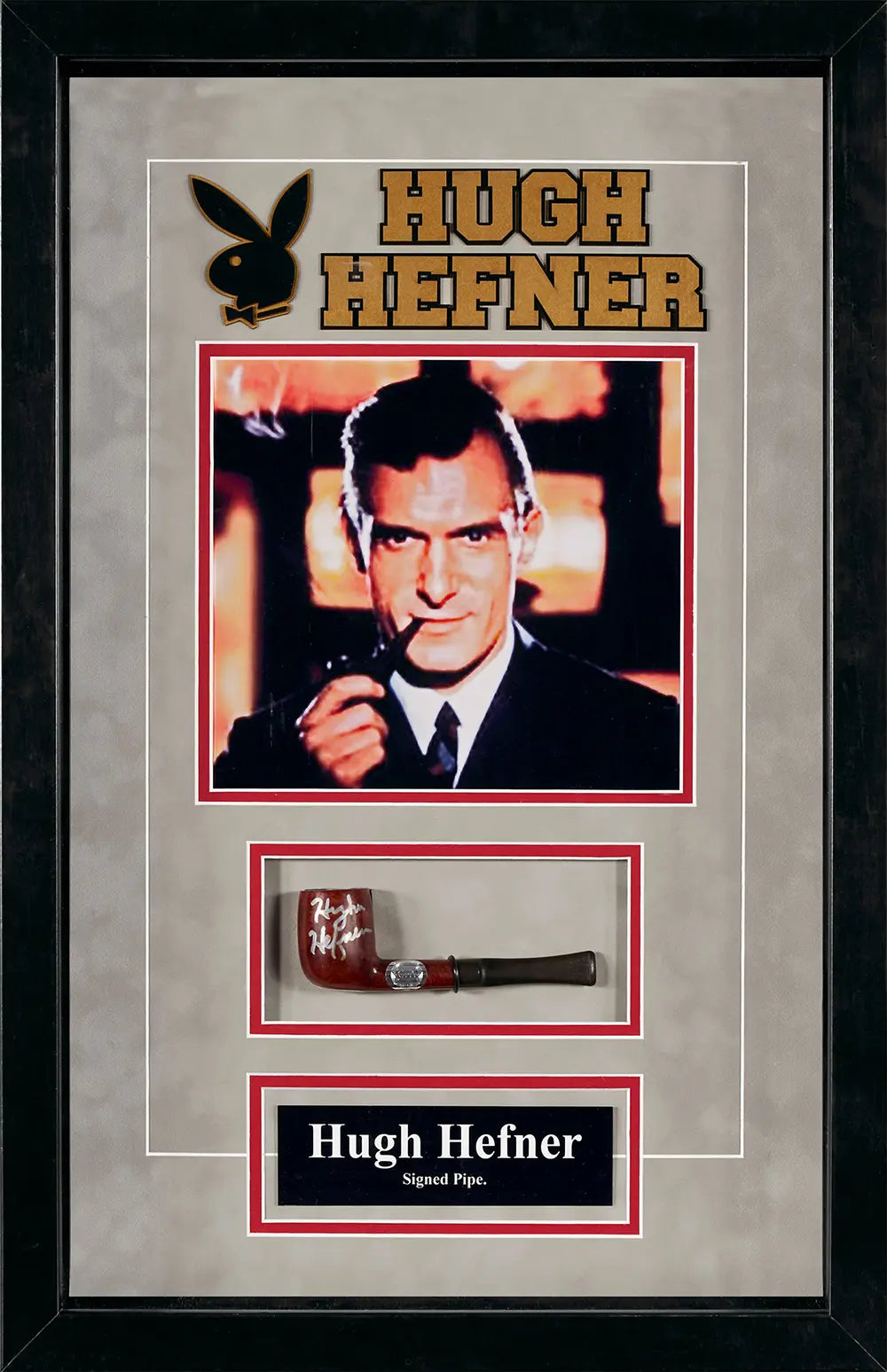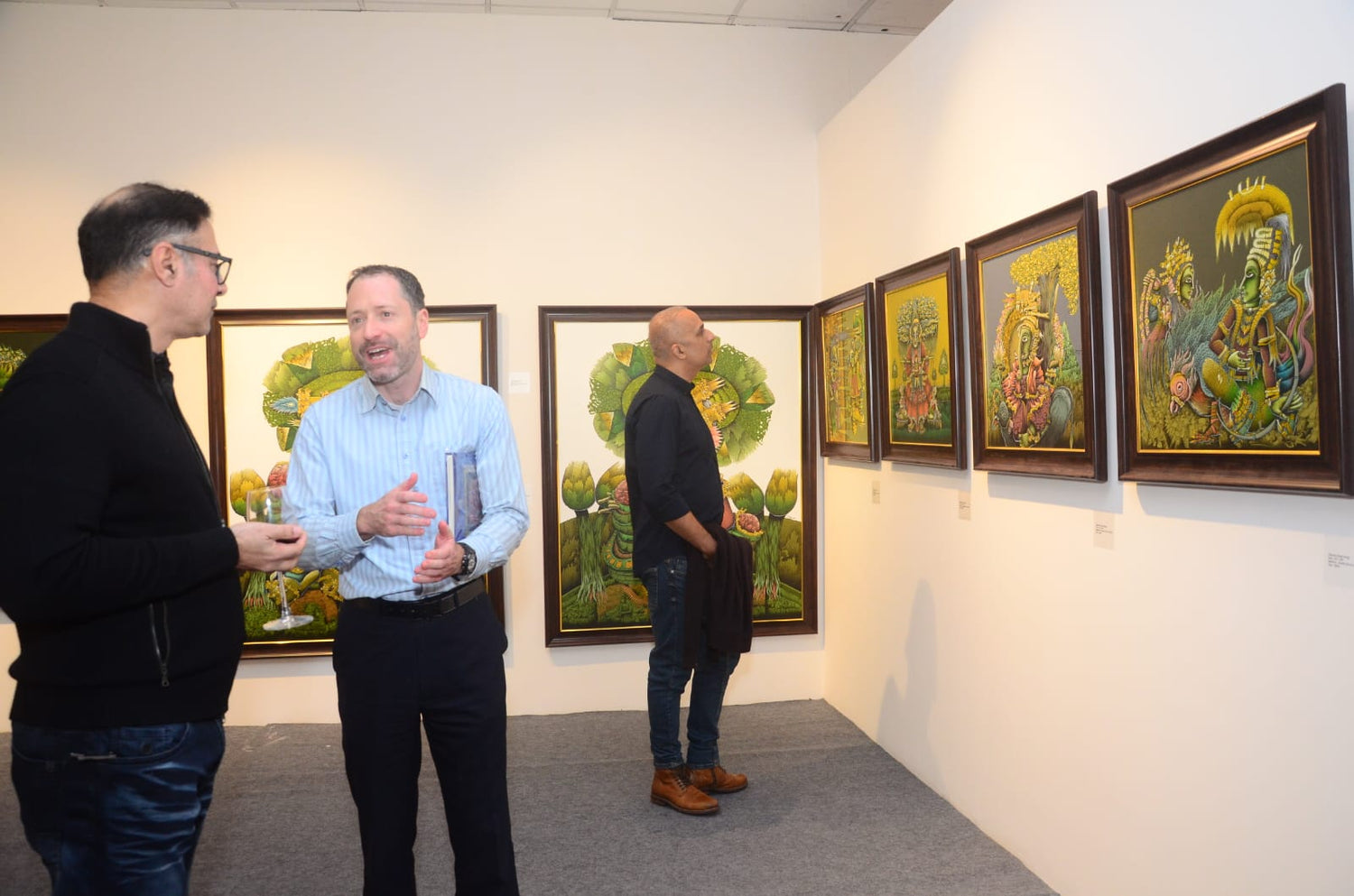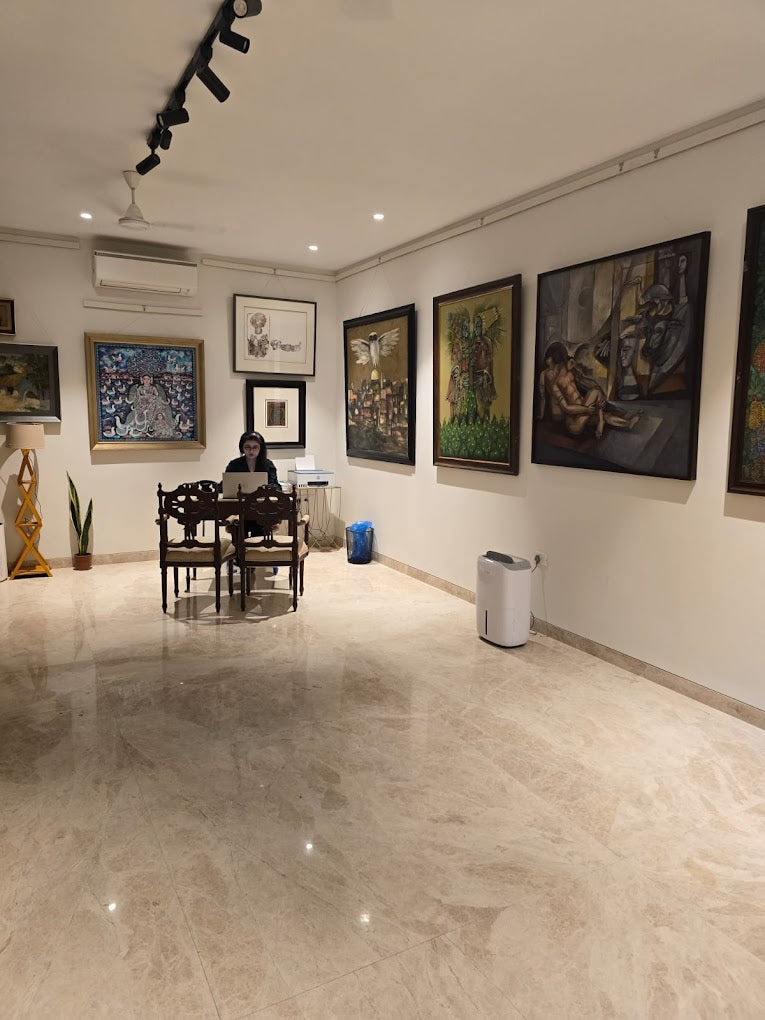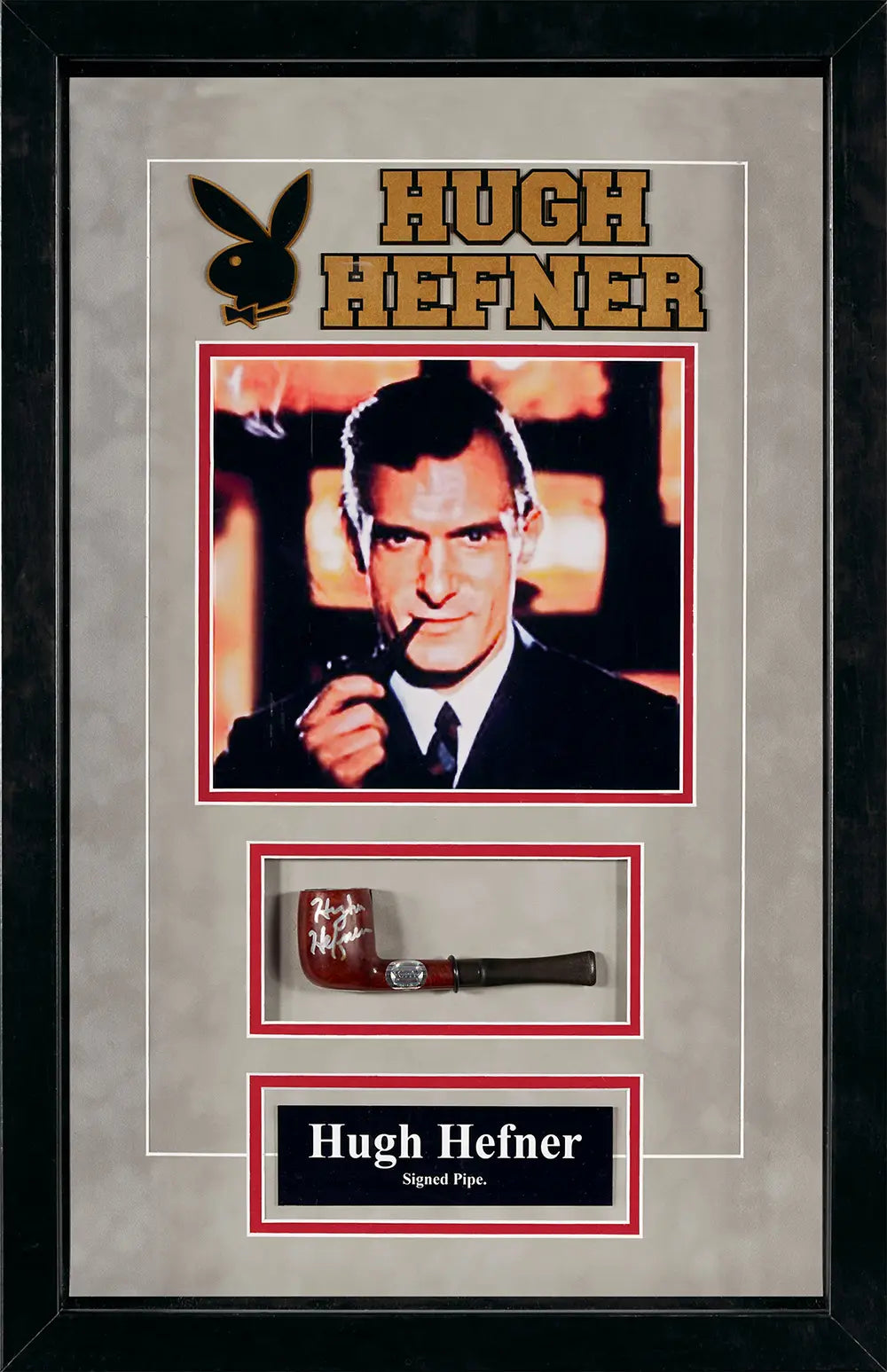Gallery Silver Scpaes
Hugh Hefner Signed Tobacco Pipe
Hugh Hefner Signed Tobacco Pipe
Couldn't load pickup availability
This sandblasted ebony tobacco pipe, bearing the original signature of Hugh Marston Hefner (1926–2017) and accompanied by a photograph, stands as a cultural artifact emblematic of mid-20th-century American modernity and its shifting moral and aesthetic paradigms. Beyond its function as a personal object, the signed pipe encapsulates the lifestyle, ideology, and cultural revolution Hefner both embodied and helped to construct through his creation of Playboy magazine in 1953. As such, it holds value not only as a collectible but also as an artifact within the art historical discourse of design, material culture, and visual identity.
Formally, the pipe’s craftsmanship reflects the mid-century fascination with elegance, refinement, and masculine sophistication, qualities central to the Playboy ethos. The sandblasted ebony surface, with its rich matte texture and tactile grain, echoes the aesthetics of bespoke luxury objects that defined postwar modern design. In the 1950s and 1960s, such items became markers of cultivated taste, linking consumerism with identity formation. Hefner’s choice of a tobacco pipe as a personal accessory further reinforced the image of the intellectual modern man, urbane, self-assured, and cosmopolitan.
From a cultural perspective, the pipe functions as an extension of Hefner’s self-stylization. In the visual culture of Playboy, smoking paraphernalia, fine tailoring, and interior design were components of a broader aesthetic vocabulary that merged leisure with sophistication. This object thus becomes a microcosm of the Playboy philosophy, pleasure elevated to an art form, where lifestyle itself was curated as a performative act. The engraved signature transforms an everyday object into a relic of celebrity and a symbol of cultural influence, bridging personal habit with public mythmaking. The object aligns with the mid-century American design movement’s emphasis on material refinement and form functionality, comparable to contemporaneous works in industrial design by figures such as Charles and Ray Eames or George Nelson. Yet, unlike these design pioneers, Hefner’s aesthetic was rooted not in utilitarian minimalism, but in the sensual and aspirational —an idealised vision of sophistication that redefined masculine identity through media and consumption.
Thus, the signed ebony pipe transcends its utilitarian role to stand as a historical symbol of postwar American culture where design, celebrity, and ideology intertwined. It represents not merely a personal artifact of Hugh Hefner, but a tangible embodiment of the Playboy era’s complex negotiation between pleasure, intellect, and modernity.

No alternative collection available.

Why Choose Us
Art has always, naturally, reflected the development and exploration of different thoughts and perceptions, and our current postmodern era is no different. It is interesting to see how art has evolved visually, yet the traditional methods of composing art remain a valid means of expression.
All it takes for an artist to rise above normalcy, is inspiration, which fuels his passion to paint beautiful creations throughout his life.
The valuable expression of art is always there with us, but now this expression is yet to take an interesting diversion with our art gallery, Gallery Silver Scapes, located in Hauz Khas Enclave. Art is no longer considered just decorative but has evolved and come forth as a major form of investment yielding high rates of returns for its buyers, making it an expression commonly used.

Mrs Mayor was walked into the art world by the legendary modernist Bimal Das Gupta, one of whose biggest collections remains with Gallery Silver Scapes. In the 1980s, as head and first curator of the Habiart Gallery founded by Mrs Rekha Modi — a childhood friend — Mrs Mayor worked closely with and curated shows for renowned artists such as A Ramachandran, GR Santosh, Rameshwar Broota, Sakti Burman, MK Bardhan, Dhiraj Chaudhury, M Sivanesan, and Arup Das among others.
Besides modern masters, she also worked with young contemporaries such as Sudip Roy, Paresh Maity, Subroto Kundu, Vinod Sharma, and many more. Artworks commissioned by her are now part of prestigious collections, such as those of the India Habitat Centre, Ranbaxy, Pepsi, Hotel Lalit, Bank of America, and many more private and public collections.

